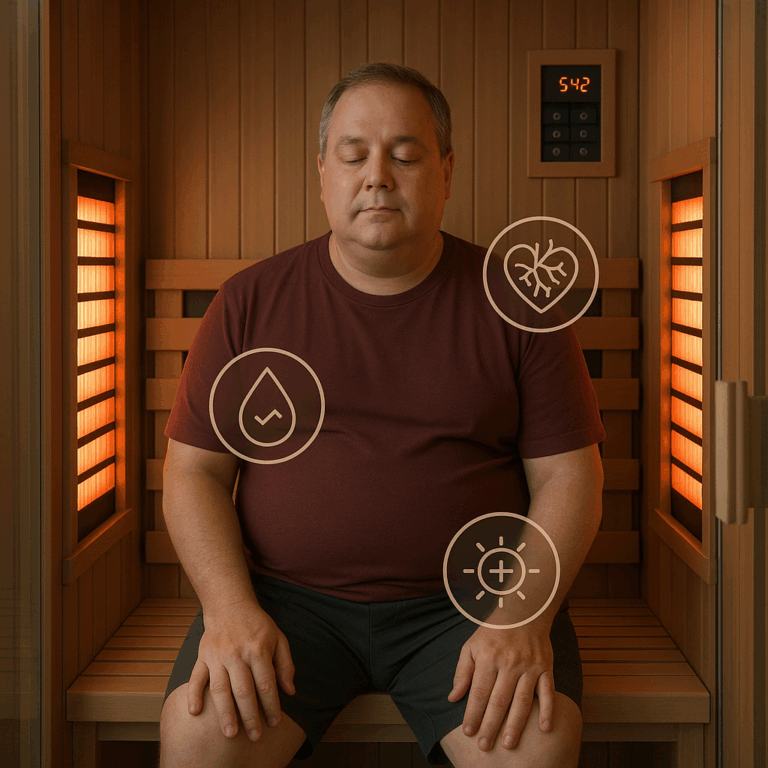
Sauna therapy has been practiced for centuries, with origins tracing back to Finnish culture and beyond. In recent decades, scientific research has validated its profound health benefits, particularly regarding cardiovascular health, detoxification, metabolic function, and longevity. This article examines the physiological mechanisms of sauna use, its impact on different bodily systems, and the latest scientific findings that support its role in health optimization.
Understanding the Mechanisms of Sauna Therapy
Heat Exposure and Thermoregulation
The human body maintains homeostasis through thermoregulation, a process governed by the hypothalamus. When exposed to high temperatures in a sauna, core body temperature can increase by 1.5-3°C (2.7-5.4°F), triggering several physiological responses:
- Vasodilation: Blood vessels widen to enhance heat dissipation, improving circulation.
- Sweating: Perspiration increases to regulate temperature, aiding in detoxification.
- Heart Rate Elevation: Sauna use can elevate heart rate to 120-150 bpm, mimicking moderate-intensity exercise.
Cardiovascular Benefits
Multiple studies highlight the cardiovascular benefits of regular sauna use. A landmark 2015 study published in JAMA Internal Medicine found that frequent sauna bathing (4-7 times per week) reduces the risk of sudden cardiac death by 63%. The key cardiovascular effects include:
- Reduced Blood Pressure: Heat exposure stimulates nitric oxide production, leading to vasodilation and lower blood pressure.
- Enhanced Circulation: Sauna therapy promotes endothelial function, improving blood vessel health.
- Reduced Inflammation: Sauna use lowers systemic inflammation markers like C-reactive protein (CRP), associated with heart disease risk.
Detoxification and Sweat Composition
Sweating plays a crucial role in detoxification, aiding in the excretion of heavy metals and environmental toxins. Studies have demonstrated that sweat induced by sauna bathing contains notable amounts of lead, cadmium, arsenic, and mercury. Key detoxification benefits include:
- Elimination of Toxins: Sweat contains lipid-soluble toxins that are not efficiently excreted via urine.
- Support for Liver and Kidney Function: Reducing toxic load alleviates stress on detoxification organs.
- Reduction of BPA and Phthalates: Sauna therapy can enhance excretion of endocrine-disrupting chemicals.
Metabolic and Weight Loss Effects
Sauna-induced heat stress activates pathways similar to those engaged during exercise. A 2021 study in Frontiers in Physiology found that repeated sauna exposure enhances mitochondrial function, leading to improved metabolic efficiency. Other metabolic benefits include:
- Increased Caloric Expenditure: A 30-minute sauna session can burn 300-600 calories due to elevated heart rate and thermogenesis.
- Improved Insulin Sensitivity: Heat exposure improves glucose metabolism and insulin function.
- Boosted Growth Hormone Production: Post-sauna growth hormone levels can rise by 200-500%, promoting muscle recovery and fat metabolism.
Neurological and Cognitive Benefits
Sauna therapy has demonstrated neuroprotective effects, reducing the risk of neurodegenerative diseases such as Alzheimer’s and Parkinson’s. Mechanisms include:
- Increased Brain-Derived Neurotrophic Factor (BDNF): Supports neurogenesis and cognitive function.
- Reduction of Stress Hormones: Sauna use lowers cortisol while boosting endorphins, promoting relaxation.
- Improved Sleep Quality: Heat exposure stimulates melatonin production, enhancing sleep onset and depth.
Immune System Modulation
Regular sauna use strengthens the immune system by stimulating the production of heat shock proteins (HSPs), which play a crucial role in cellular repair and immune function. Benefits include:
- Enhanced White Blood Cell Production: Improves the body’s ability to fight infections.
- Faster Recovery from Illness: Research suggests sauna use reduces the duration and severity of colds.
- Reduction of Chronic Inflammation: Helps regulate the immune system, beneficial for autoimmune conditions.
Longevity and Anti-Aging Effects
Emerging research suggests that sauna therapy promotes longevity through hormetic stress—a mild biological stressor that enhances resilience. Studies indicate:
- Activation of FOXO3 Gene: Associated with increased lifespan and cellular repair.
- Reduction of All-Cause Mortality: Sauna users experience a 40% lower risk of premature death.
- Enhanced Skin Health: Improves collagen synthesis, leading to better skin elasticity and hydration.
Choosing the Right Sauna: Infrared vs. Traditional
Two primary types of saunas exist, each with distinct physiological effects:
Traditional Saunas (Finnish Saunas)
- Heat source: Wood, electric, or gas heater.
- Temperature: 70-100°C (158-212°F).
- Humidity: 5-30%.
- Benefits: Deep sweating, cardiovascular conditioning, and detoxification.
Infrared Saunas
- Heat source: Infrared light (near, mid, or far-infrared waves).
- Temperature: 45-65°C (113-149°F).
- Humidity: Low.
- Benefits: Deeper tissue penetration, lower perceived heat, enhanced detoxification.
Conclusion
Scientific research overwhelmingly supports the health benefits of sauna therapy, from cardiovascular protection and metabolic enhancement to immune modulation and longevity. Whether using a traditional or infrared sauna, incorporating heat therapy into a wellness routine offers profound physiological advantages. As research continues to evolve, sauna therapy is poised to remain a cornerstone of holistic health and disease prevention.



